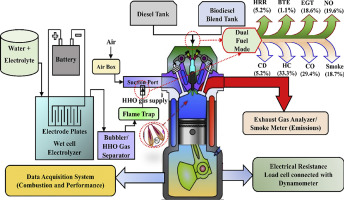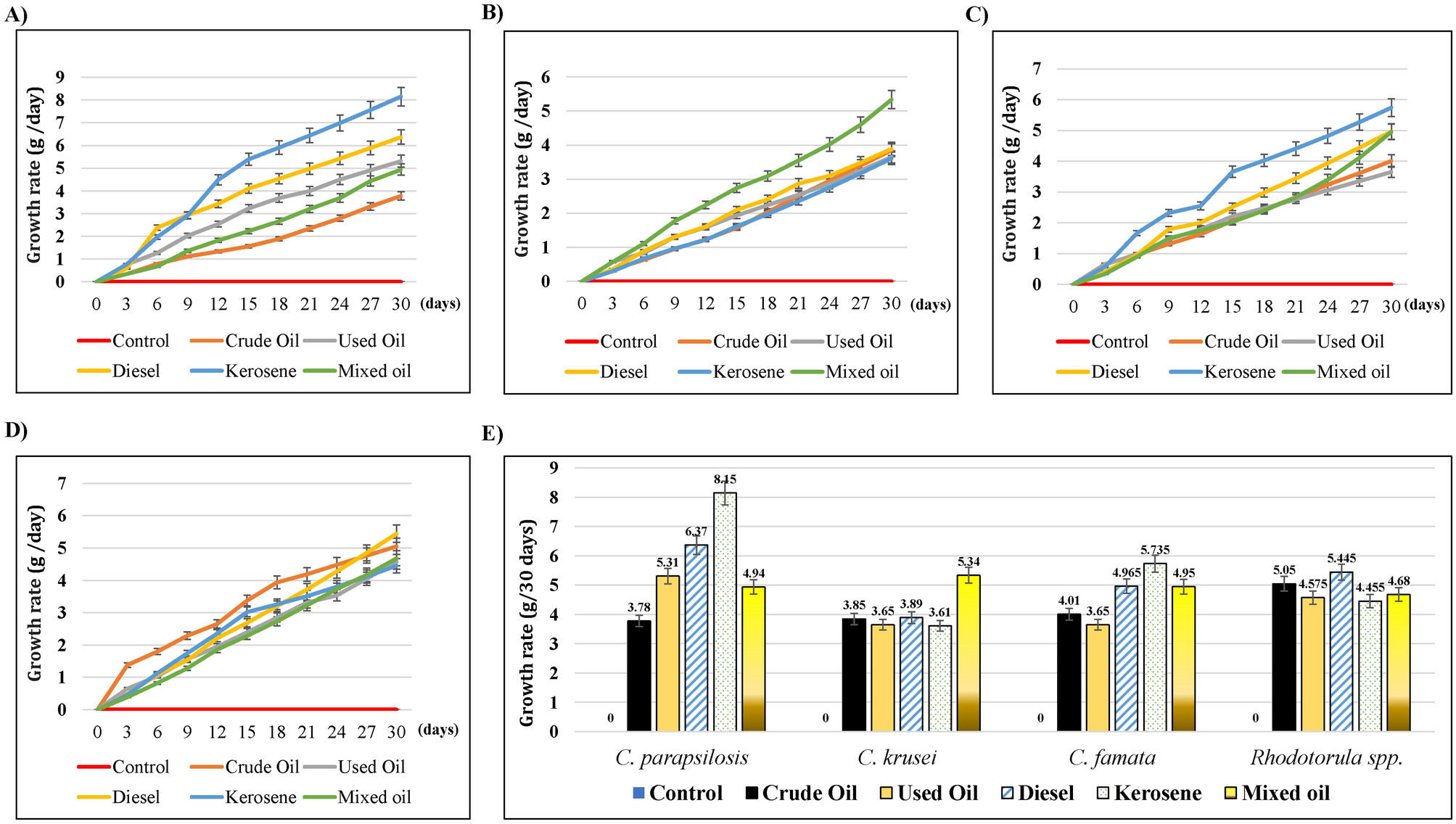Mixing diesel and kerosene can improve cold flow operability by lowering the temperature filter pass-through point. The primary reason for blending diesel fuel with kerosene is to enhance performance in cold weather conditions.
Kerosene has a lower Cold Filter Plugging Point (CFPP) than diesel, allowing it to pass through the filter at a lower temperature. This blend is commonly used to prevent fuel gelling in low temperatures, ensuring a smoother flow through the engine during winter.
However, it is crucial to follow recommended mix ratios and not to exceed certain limits to avoid damaging the engine or affecting its overall performance.

Understanding Diesel And Kerosene
Differences In Properties
Diesel and kerosene are both fuels commonly used in various applications.
- Diesel has a higher energy content compared to kerosene.
- Kerosene has a lower flash point than diesel, making it more volatile.
- Diesel is heavier than kerosene and has a higher boiling point.
- Kerosene is often dyed red for identification purposes.
Common Uses
Both diesel and kerosene have distinct purposes and applications.
- Diesel is primarily used in diesel engines for vehicles and machinery.
- Kerosene is commonly used for heating, lamps, and stoves.
- Blending diesel with kerosene can improve cold weather performance.

Credit: www.nature.com
Effects Of Mixing Diesel And Kerosene
Kerosene blended with diesel can improve cold weather performance by lowering the cold filter plugging point (CFPP) of the fuel, enhancing operability in colder temperatures.
When diesel is mixed with kerosene, it can enhance engine functionality, particularly in terms of improved fuel flow and combustion efficiency.
Risks And Considerations
When considering mixing diesel and kerosene, there are risks and considerations that must be taken into account. By understanding the potential damage to the engine and the legal and safety implications, you can make an informed decision about whether it is advisable to mix these two fuels.
Potential Damage To Engine
Mixing diesel and kerosene can lead to potential damage to the engine due to the differences in their properties. Kerosene has a lower lubricity and cetane rating compared to diesel, which can result in poor fuel combustion and inefficient engine performance. This can lead to issues such as knocking, clogging of fuel filters, and damage to fuel injectors.
Legal And Safety Implications
From a legal and safety perspective, mixing diesel and kerosene may pose risks. In many jurisdictions, it is illegal to blend fuels without proper licensing and compliance with regulations. Additionally, the use of blended fuels may void warranties on vehicles and equipment, leading to potential financial and legal repercussions.
Proper Blending Techniques
Mixing diesel and kerosene can enhance cold flow operability and performance, with kerosene having a better cold filter plugging point than diesel. This blend is commonly used during cold weather conditions to improve fuel characteristics and is a practice to improve diesel’s performance.
Optimal Ratios
When it comes to blending diesel and kerosene, finding the optimal ratio is crucial. The right mixture ensures that the cold flow operability of the fuel is improved. Generally, a common ratio for blending diesel fuel with kerosene is around 80% diesel and 20% kerosene. However, the exact ratio may vary depending on the specific requirements of your engine and the prevailing weather conditions.
Blending Procedures
- Start by ensuring that both the diesel fuel and kerosene are clean and free from any contaminants. This will help maintain the performance and efficiency of your engine.
- Using a clean container, measure the required amounts of diesel fuel and kerosene according to the optimal ratio. Avoid guessing or eyeballing the measurements, as an incorrect blend can lead to engine damage or decreased performance.
- Gently pour the diesel fuel into the container first, followed by the kerosene. This sequential order helps to ensure proper mixing.
- Use a clean stirring rod or stick to blend the fuels together. Stir the mixture in a circular motion for a few minutes, ensuring the fuels are thoroughly combined.
- After blending, allow the mixture to settle for a short period of time. This will help any air bubbles or inconsistencies to dissipate, ensuring a homogeneous mixture.
- Finally, transfer the blended fuel to your diesel engine or storage tank. Make sure to follow appropriate safety measures and avoid any spills or leaks.
By following these proper blending techniques, you can achieve a well-mixed fuel solution of diesel and kerosene that meets the requirements of your engine and improves cold flow operability.
Alternative Fuel Blending Options
Blending diesel with kerosene enhances cold flow operability due to kerosene’s superior cold filter plugging point (CFPP). This blend can improve performance in cold weather, aiding in smoother flow through filters at lower temperatures. Mixing these fuels is a common practice for optimizing diesel functionality.
Diesel And Gasoline
One common alternative fuel blending option is mixing diesel and gasoline. While diesel and gasoline are similar in some ways, they have different combustion properties and are not typically mixed together for use in an engine. The fuel systems, engines, and emission control systems of vehicles are designed specifically for either diesel or gasoline, so mixing the two fuels can lead to poor engine performance, reduced fuel efficiency, and potential damage to the engine and its components.
Kerosene And Other Fuels
Kerosene and diesel fuel are often blended together to improve cold weather performance. Kerosene has a lower cold filter plugging point (CFPP) compared to diesel fuel, which means it can pass through a filter at lower temperatures. By blending kerosene with diesel fuel, the resulting mixture has improved cold flow operability, making it suitable for use in cold weather conditions.
Kerosene can also be mixed with diesel fuel to gain a couple of benefits. In winter time, kerosene is added to lower the cloud point and prevent the fuel from gelling in low temperatures. Additionally, blending kerosene with diesel fuel can help improve the lubricity of the fuel, which reduces wear and tear on engine components.
However, it is important to note that when blending kerosene with other fuels, it is crucial to follow the recommended blending ratios and guidelines provided by fuel manufacturers. Improper blending can result in poor fuel quality and potential damage to the engine.
When it comes to blending kerosene with gasoline, it is generally not recommended. Gasoline has a much lower flash point and different combustion properties compared to kerosene, making the two fuels incompatible for blending and use in engines designed for gasoline.
Overall, alternative fuel blending options can provide certain benefits in terms of performance and cold weather operability. If you are considering blending diesel or kerosene with other fuels, it is essential to consult with fuel manufacturers or experts to ensure proper blending ratios and compatibility with your engine.

Credit: www.researchgate.net

Credit: www.sciencedirect.com
Frequently Asked Questions On Can You Mix Diesel And Kerosene
What Happens If You Mix Kerosene And Diesel?
Mixing kerosene with diesel can improve cold flow operability due to kerosene’s lower cold filter plugging point, allowing smoother filter passage at lower temperatures.
How Much Kerosene Do I Add To Diesel?
Adding kerosene to diesel can improve cold flow operability. The ratio varies, but a common recommendation is 1 part kerosene to 20 parts diesel. It’s important to consult manufacturer guidelines before blending. Mixing fuels affects engine performance and may void warranties.
Is Diesel #1 The Same As Kerosene?
No, diesel #1 and kerosene are not the same. They have different characteristics and uses. Diesel #1 is a lighter grade of diesel fuel, while kerosene is a lighter fuel used for heating and lighting.
How Can You Tell If Diesel Is Mixed With Kerosene?
The kinematic viscosity and percent opacity tests can help determine if diesel is mixed with kerosene. These tests assess the extent of kerosene adulteration in the fuel. Compared to the density test, the kinematic viscosity test is a better indicator of adulteration levels.
Estimation of petrol and diesel adulteration with kerosene and other substances can also be done.
Can Diesel And Kerosene Be Mixed Together?
No, it is not recommended to mix diesel and kerosene together as it can affect the performance of your engine.
Conclusion
Blending diesel and kerosene is a common practice to enhance cold weather performance. However, it’s crucial to use the recommended ratio and consult a professional. Ensuring the right balance is essential for optimizing efficiency and preventing engine damage. Stay informed and make informed decisions regarding fuel blending practices.
